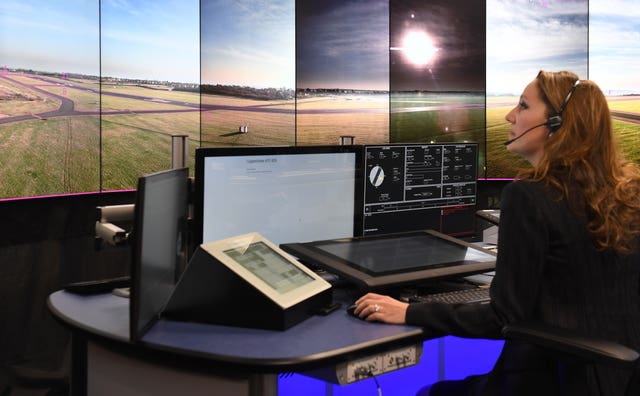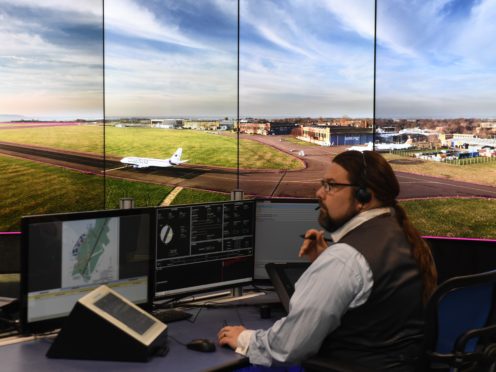A digital air traffic control (ATC) centre has opened at a UK airfield for the first time.
Controllers at Cranfield Airport in Bedfordshire have begun using live footage from high-definition cameras to direct take-offs and landings.
The technology replicates what can be seen through the windows of the traditional ATC tower via a live feed of panoramic views displayed on 14 screens in an operations room at the airport.
It provides the ability to zoom in on aircraft and locate them in times of poor visibility.
Around 20,000 take-offs and landings are carried out every year at Cranfield, which hosts light aircraft, business jets and aviation research.
Saab Digital Air Traffic Solutions, which installed the system, claims it will improve the situational awareness of controllers and enable them to make quicker and more informed decisions.
Cranfield Airport is working with the Civil Aviation Authority to complete the transition from its traditional tower to the new centre.
It is the first time a digital ATC centre has been used at a UK airport.
The technology has already been tested in Australia, Sweden, Norway and Ireland.
Saab Digital Air Services chief executive Johan Klintberg said: “This is a historic moment for air travel in the United Kingdom and shows the future of the UK’s aviation sector lies in leading-edge technology combined with operational expertise.”

Rob Abbott, director of aviation operations at Cranfield University, which owns the airport, said: “The new digital system will improve our air traffic controllers’ situational awareness, enabling quick and informed decisions, leading to opportunities for improved safety and efficiency.
“With our partners, Saab, we are working extremely closely with the regulator, the Civil Aviation Authority, to ensure we meet all the safety standards required of traditional air traffic control systems.”
Aviation Minister Liz Sugg said: “Cranfield’s new control centre is a fantastic example of harnessing technology to improve the efficiency of flights.
“The upcoming Aviation Strategy consultation will set out how the Government proposes to encourage the use of innovative technology to achieve sustainable aviation growth and enhance passengers’ experience.”
London City Airport is currently building a digital tower linked to the Hampshire base of ATC provider Nats. This is expected to be fully operational in January 2020.
